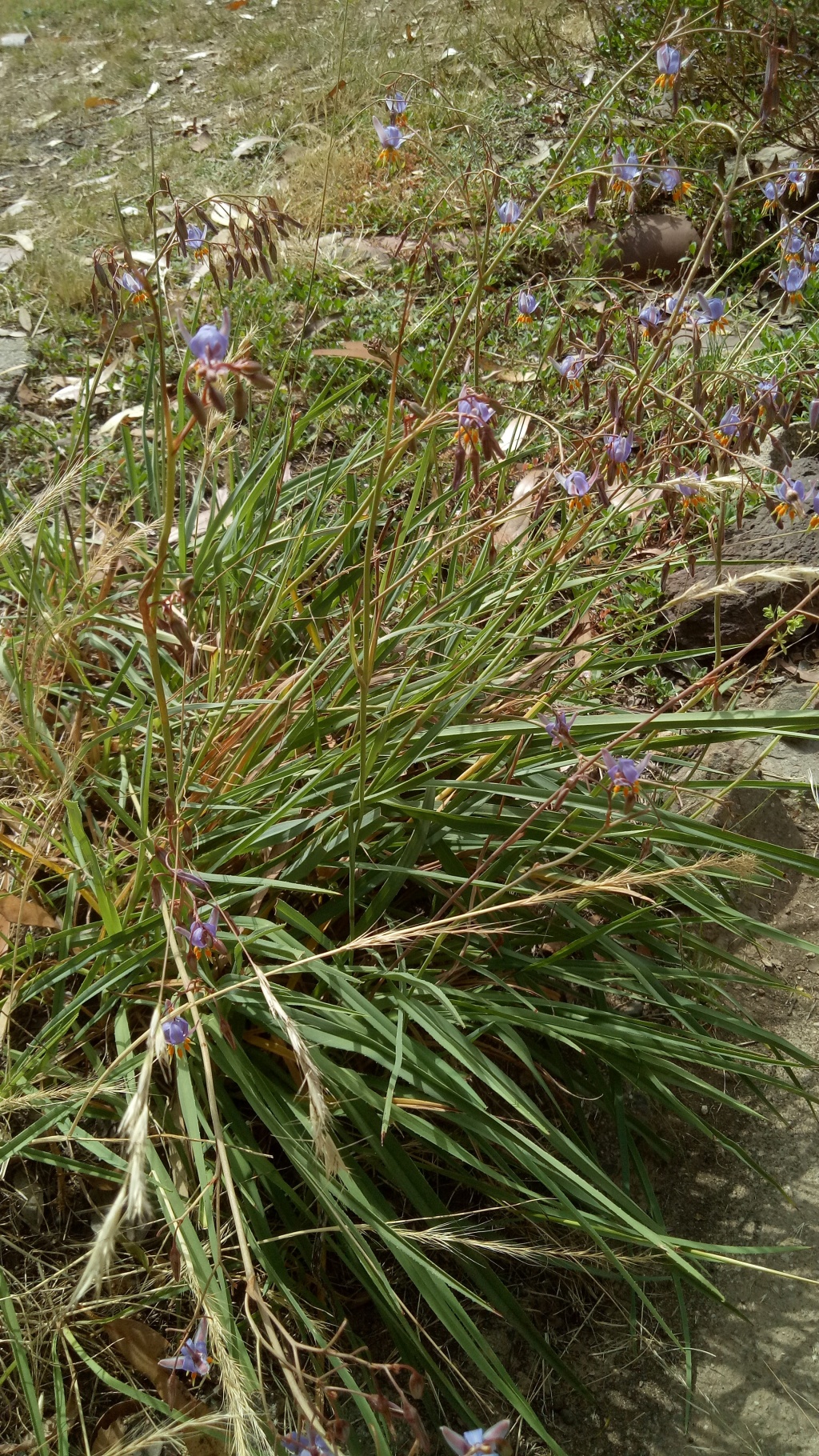Dianella amoena
G.W.Carr & P.F.Horsfall Matted Flax-lilyExtensively rhizomatous, usually forming loose mats, to c. 5 m diam; culms to 90 cm high. Leaves usually dying back over summer, erect to spreading, hardly sheathing at base, 12–45 cm long, 4–12 mm wide, flat to broadly V-shaped in section, rather thin-textured, smooth apart for irregularly spaced tubercles, to c. 0.5 mm long, along margins and abaxial midrib, concolorous, grey-green. Inflorescence rather sparse and scape relatively slender (up to c. 4 mm diam.), exceeding the foliage; panicle ovoid-pyramidal, 5–20 cm long, branches acutely angled from main axis; flowers 15–20 mm wide, pale blue to blue-violet, faintly nutmeg-scented; perianth segments widely spreading or reflexed, usually closing by mid-afternoon, slightly longer than stamens; staminal filament to c. 5 mm long, struma c. 2 mm long, orange, anther yellow, c. 3 mm long. Berry globuloar to obovoid, 4–7 mm long, shining pale to dark blue; seeds smooth, angular globose, c. 3 mm long 2.5 mm wide. Flowers mostly Nov.–Jan.
Wim, VVP, VRiv, GipP, Gold, CVU, DunT, EGU, HSF, HNF, Strz. Also occurs ?NSW and Tas. Largely confined to drier grassy woodland and grassland communities south of the Dividing Range and now much depleted through its range.
The matting habit, slender, soft-textured leaves and culms and relatively large flowers are distinctive.
NSW plants determined as this species are not typical and may represent a different taxon.
 Spinning
Spinning